The most delicious and beautiful beef roast is without a doubt a standing rib roast. This stunning roast needs only salt and pepper and a few minutes of prep time to be a showstopper every time you make it.
Cooking a delicious and juicy standing rib roast doesn't have to be intimidating or difficult. It's actually a surprisingly simple process and the reward is an unforgettable dinner that looks impressive yet takes minimal effort.
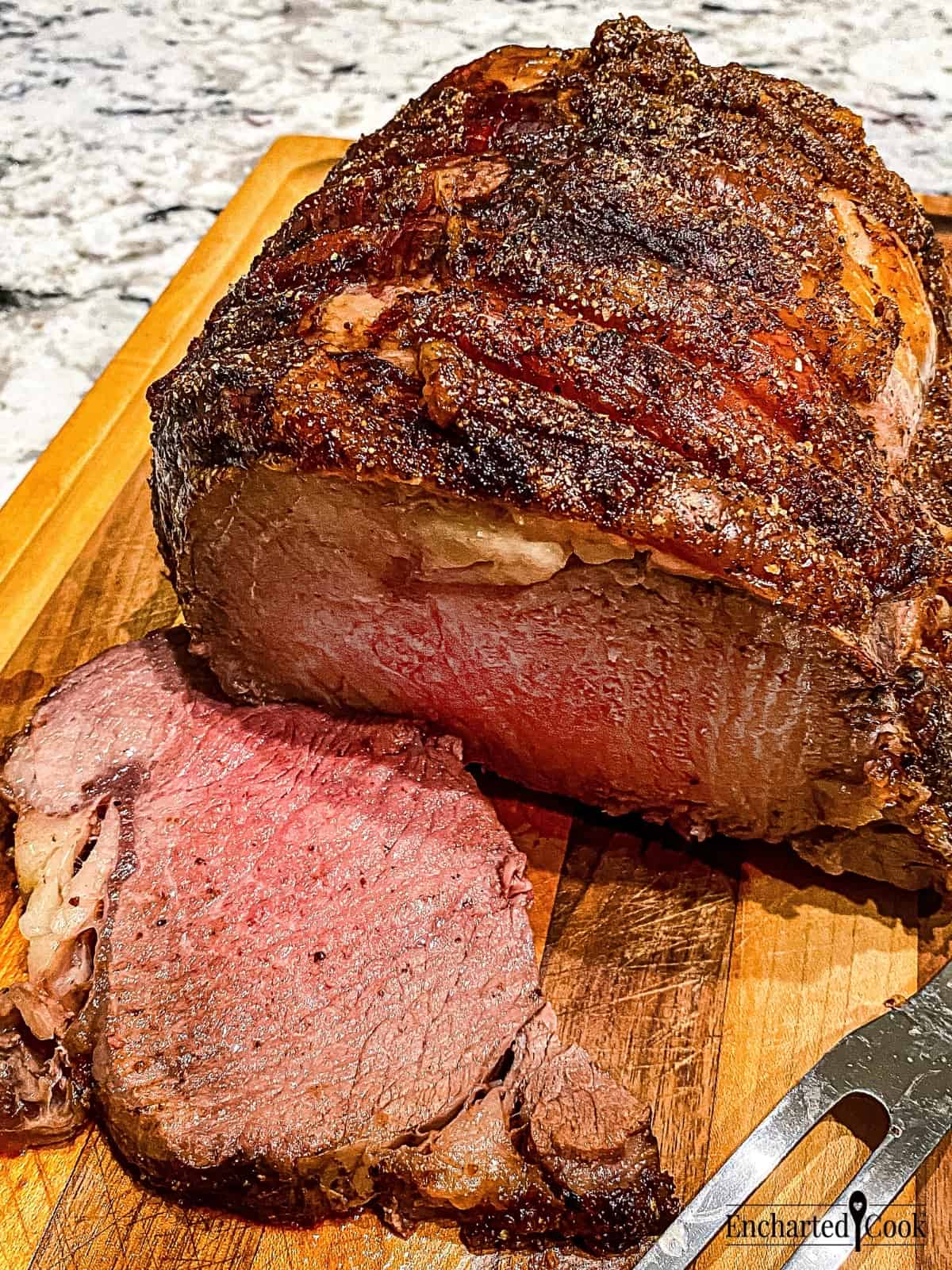
Nothing says "special occasion" like a succulent, carving-ready roast with charred crust on the outside and a juicy, tender interior... and with this recipe, it is possible to make a steakhouse-quality roast, right at home.
So here are the basics of buying and preparing your perfect prime rib for the holiday season or special occasion meal. From choosing the right cut of meat to preparing it for the oven, and then to roasting it to perfection, I've got you covered. Plus I have a few special tips you need to ensure your roast comes out juicy and full of flavor every time.
Jump to:
- What Is a Standing Rib Roast?
- What is Prime Rib?
- What is the "Short End"?
- Why We Love a Standing Rib Roast
- Why This Recipe Works
- Ingredients
- Step-by-Step Instructions
- Carry Over Cooking
- What to Serve with a Standing Rib Roast
- My Top Tips
- Substitutions & Variations
- Equipment
- Make-Ahead & Storage
- More Helpful Hints and Easy Roasted Meats
- 📖 Recipe
- 💬 Comments
What Is a Standing Rib Roast?
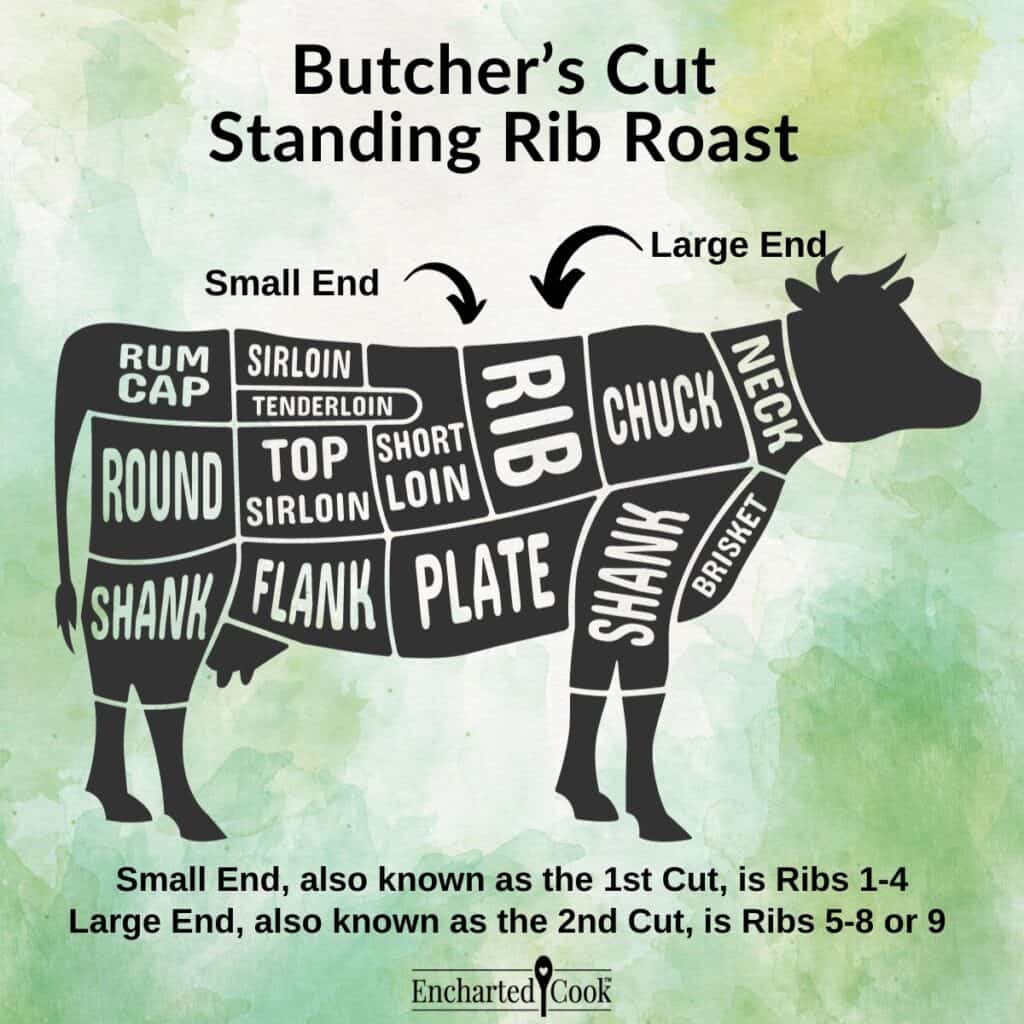
Sometimes called a ribeye roast, a standing rib roast is a cut of beef that is the ribs from the top section of a steer between the chuck and the short loin. This particular beef roast is flavorful and tender and is the cut of meat when a restaurant uses the term prime rib whether or not the grade of the beef is "prime".
What is Prime Rib?
In the United States, there are three grades of beef as set by the USDA and it is graded according to fat marbling. "Prime" cuts have an abundant amount of fat, "choice" has moderate marbling, and "select" has slight marbling and the least fat.
So when you order "prime rib" it is a standing rib roast that has been graded as "prime".
What is the "Short End"?
A further distinction of a standing rib roast is the cut. The "first cut", also called the small end, is closest to the short loin and is the first 1 through 4 ribs. The second cut, called the "large end", is ribs 5 through 8 and sometimes 9 and is closer to the chuck. There is a difference between these cuts; the small end being nearest to the loin is more tender, while the large end is more fatty.
If you have a particular preference for a particular cut and size of roast you can place a special order with your local butcher to cut a roast as you like. You can also request that the ribs be cut from the roast to make it boneless, or cut and then tied back on which makes it easier to carve.
Standing rib roasts that are boneless take less time to cook, while bone-in roasts cook more slowly. So to have the most tender roast that cooks the fastest you might choose a boneless small end roast. If a larger fat cap and bigger ribs are more to your liking, then a large end roast is your best choice.
Why We Love a Standing Rib Roast
- Simple Preparation.
- Only 3 Ingredients.
- Cooks Unattended for Hours.
- Leftovers Make Delicious Roast Beef Hash and Sandwiches.
- Elegant for Special Occasions and Holidays.
Why This Recipe Works
Growing up our holiday dinners were always extra special. Most days of the year were economical meals chosen based on what was on sale that week at the local market and what my dad liked most. Sunday was always pot roast, we never had chicken, and at least one day of the week was meatless. The exception to thriftiness was the splurge for holiday dinners and my mom always served a prime rib roast for Christmas dinner.
Year in and year out our Christmas dinner menu never changed, prime rib, baked potatoes, and green beans almondine. I was probably 15 when I asked my mom why we always had the same dinner and she said because it is an incredibly easy and delicious dinner to make... and it is!
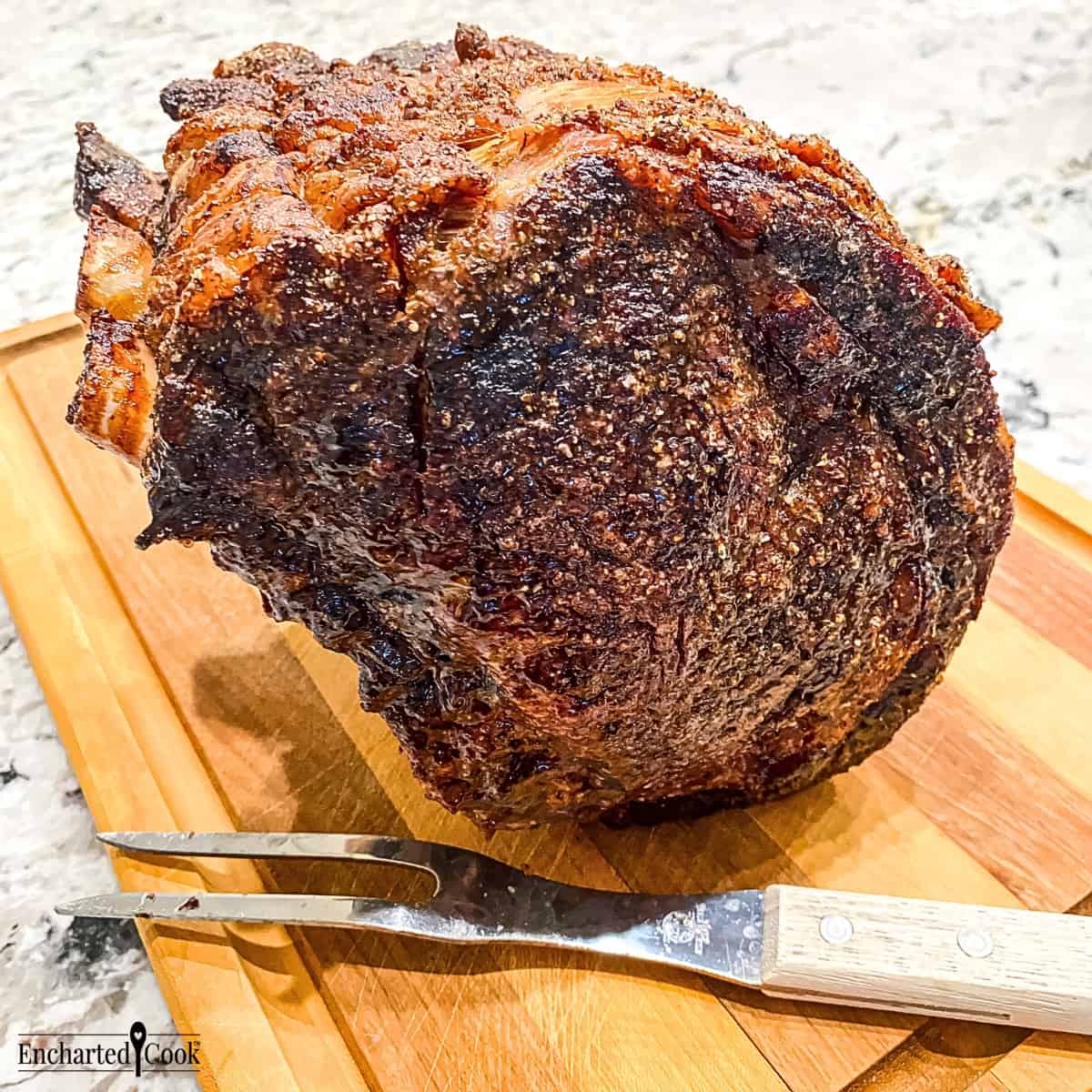
When roasted low and slow a standing rib roast develops a flavorful crust from the heat caramelizing the exterior of the roast. Mom always cooked a medium-rare roast, which was also very smart, and here's why. Dinner guests get their choice of exterior slices that are more well-done or interior slices that are perfectly medium-rare. So my dad got his favorite end slice that was well done and crusty and grandma got a center cut that was medium-rare and juicy.
The only thing that varied in making this dinner was what time the roast would be put in the oven to cook since the cooking time would vary depending on the size of the roast. Mom also ensured we had all the extras for the dinner like sour cream for the potatoes and creamed horseradish for the roast. Homemade pies, usually one pumpkin and one mince, baked the day before, rounded out the feast along with a plate of festive cookies and divinity candy.
After all these years, it is still the menu I think of when I think of Christmas dinner, because not only does everyone get a great slice of roast beef they will love and the hands-on prep time for everything is super short... but it's also my family tradition.
So, let's cook!
Ingredients

Here's what you need to make this standing rib roast recipe:
- Standing Rib Roast - Deciding how large a roast to buy can be tricky and I would rather have leftovers than not enough. So, I generally purchase at least 6 ounces to 8 ounces per person for a bone-in roast, if you are serving adults and children. For a boneless roast 4 to 6 ounces per serving is ample. Another consideration is having a bone for every adult who you know wants one. I prefer a bone-in roast and I generally purchase a small end roast with no fewer than 4 ribs to generously serve 6 to 8 adults which works out to be a 4 ½ to 5 pound roast.
- Garlic Salt - Full of flavor and shelf stable this is my favorite go-to seasoning for meats.
- Black Pepper - Freshly ground black pepper is spicey with flowery overtones and perfect for seasoning meats.
Please see the recipe card for the exact quantities.
Step-by-Step Instructions
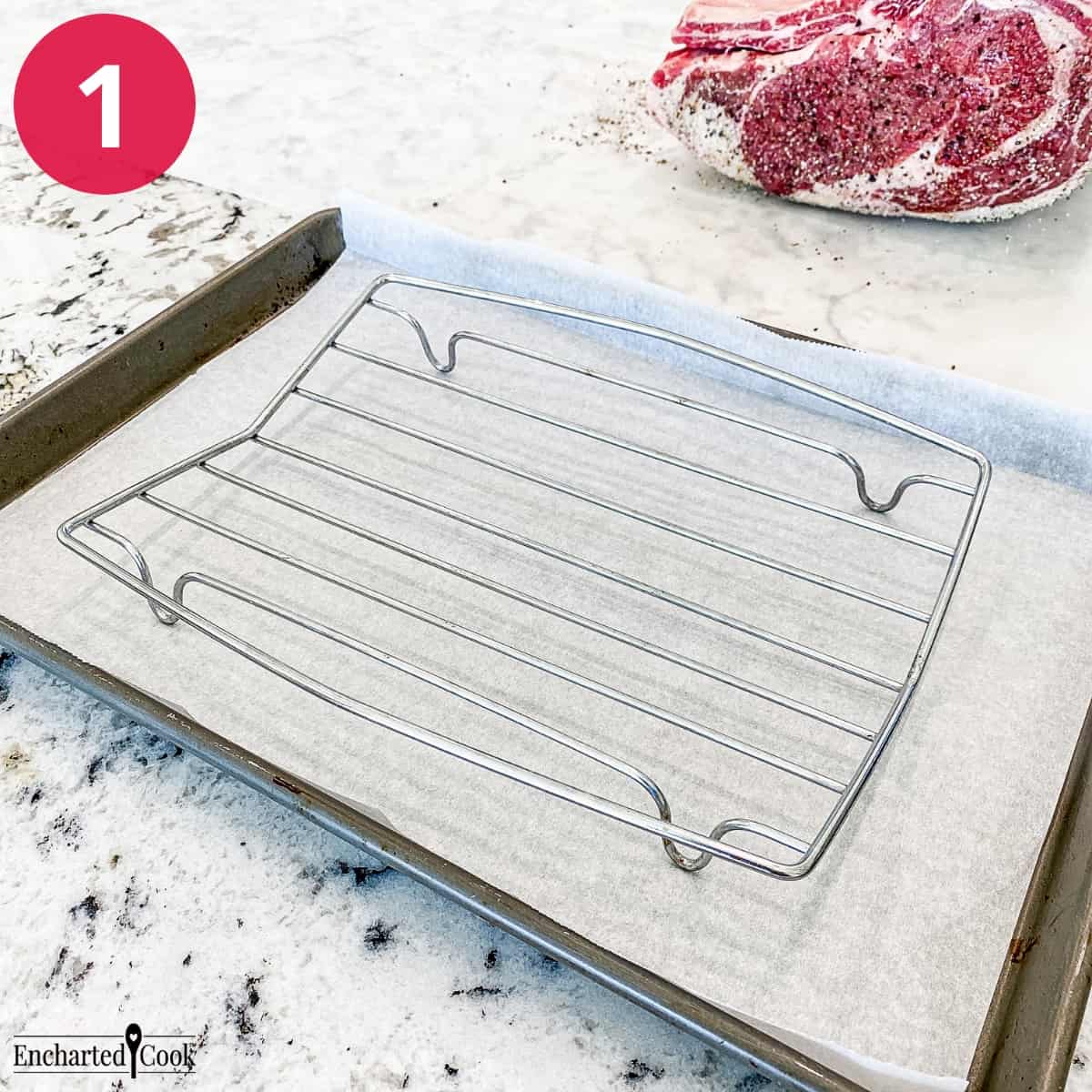
Preheat and Prepare. Preheat oven to 325°F/163°. Remove the roast from the refrigerator and let it come to room temperature. Line a rimmed baking sheet and place a roasting rack on it or use a roasting pan with a rack.

Dry. Remove the roast from its packaging and dry it thoroughly with paper towels or a clean kitchen towel. Drying the meat is essential to getting a good oven sear.

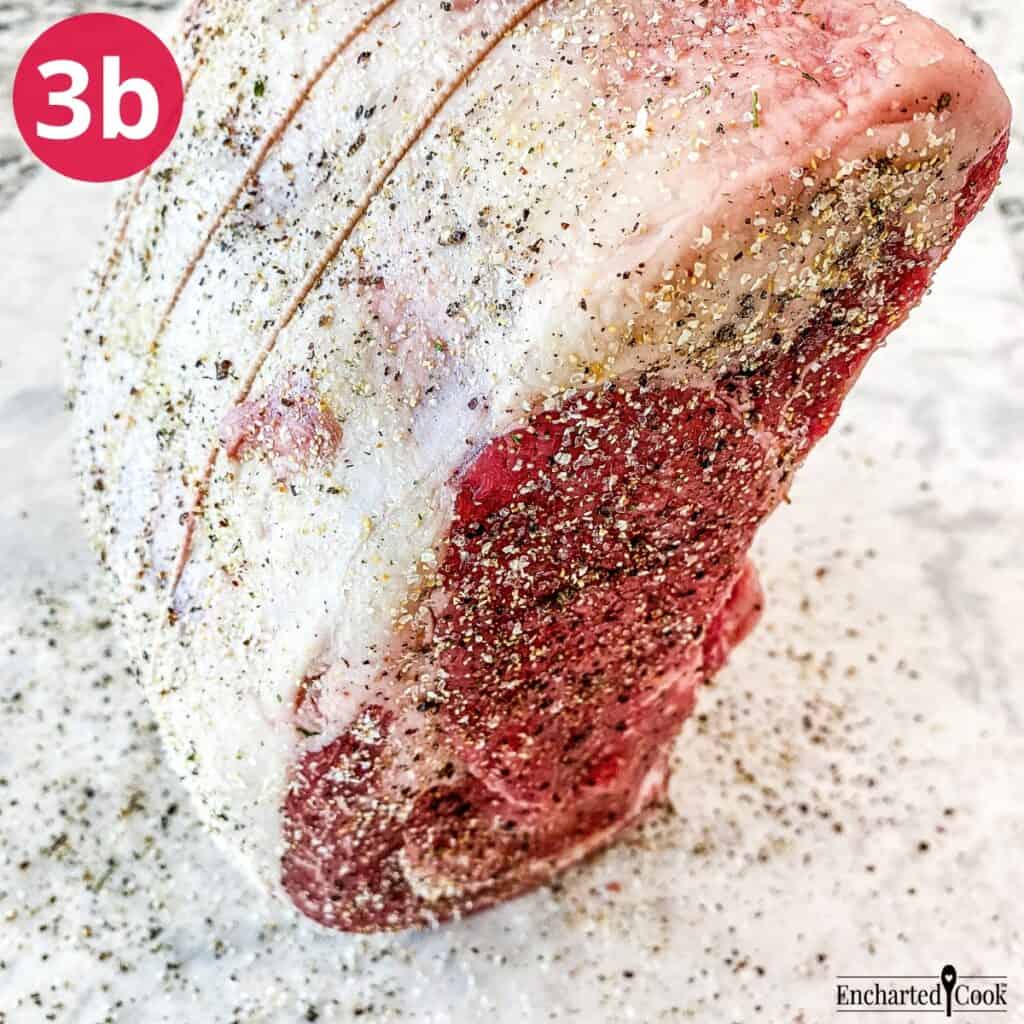
Season. Cover a clean working surface with enough parchment paper to wrap around the roast and sprinkle it with garlic salt and freshly ground black pepper.
Roll the roast in the salt and pepper so that all sides including the ends are covered.
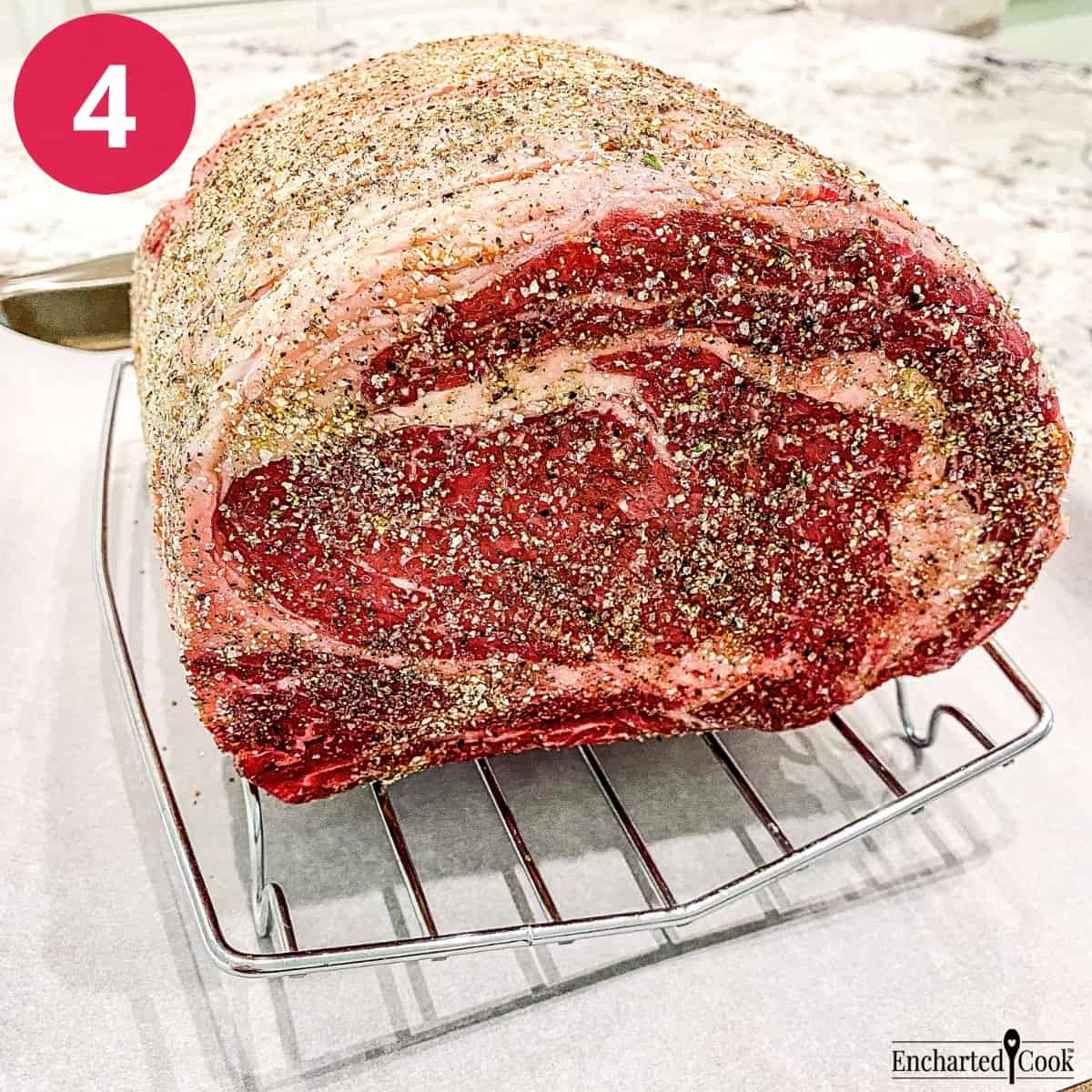
Place the roast ribs side down, fat side up, on the prepared roasting rack, and insert a meat thermometer into the center of the roast. For the most accurate reading do not let the thermometer touch the bone. You can also use an instant-read thermometer to check the roast as it cooks.

Roast. Place the roast in the oven and cook uncovered until the internal temperature of the meat reaches your desired doneness. You will need to pull the roast from the oven at 15° under the target internal temperature because the roast will continue to cook after it has been pulled from the oven and allowed to rest.
If the roast is cooking too quickly cover it with a tent of aluminum foil and reduce the oven temperature to 300°F/149°C.
PRO TIP - Once the internal temperature of the roast reaches 100°F it will cook faster.
| Doneness | Minutes Per Pound | Pull Internal Temperature for 15 Minute Rest | Target Internal Temperature |
|---|---|---|---|
| Rare | 20 to 25 Minutes/Pound | 125°F/54°C | 140°F/60°C |
| Medium-Rare | 20 to 25 Minutes/Pound | 130°F/57°C | 145°F/63°C |
| Medium | 25 to 30 Minutes/Pound | 145°/65°C | 160°F/71°C |
| Medium-Well | 25 to 30 Minutes/Pound | 150°/68°C | 165°F/74°C |
| Well | 30 to 35 Minutes/Pound | 155°/71°C | 170°F/77°C |
Carry Over Cooking
While the roast rests it will continue to cook. This is called carry-over cooking where the temperature of the meat will continue to cook the roast.
A good rule of thumb is that a roast will rise in temperature approximately 1 degree per minute. If you'd like to rest your roast longer than 15 minutes, adjust the pull temperature accordingly.
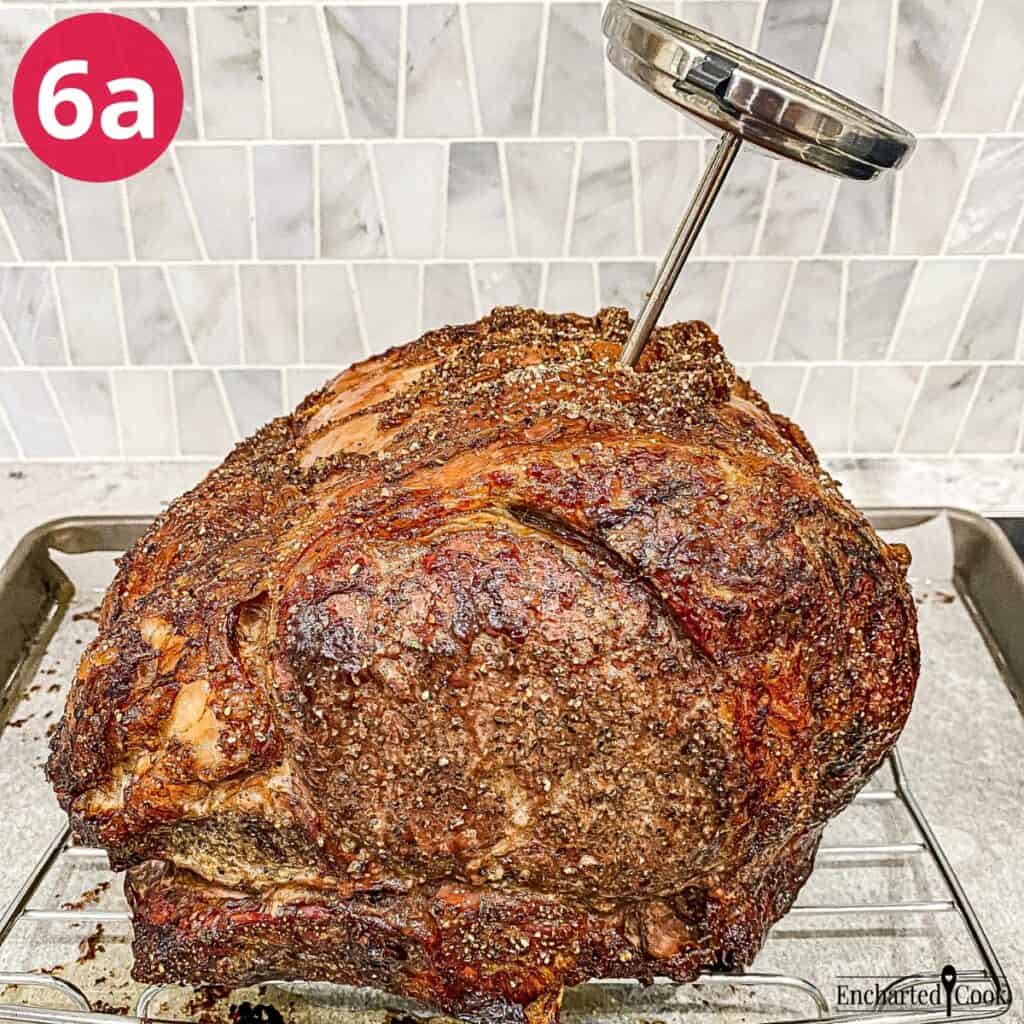
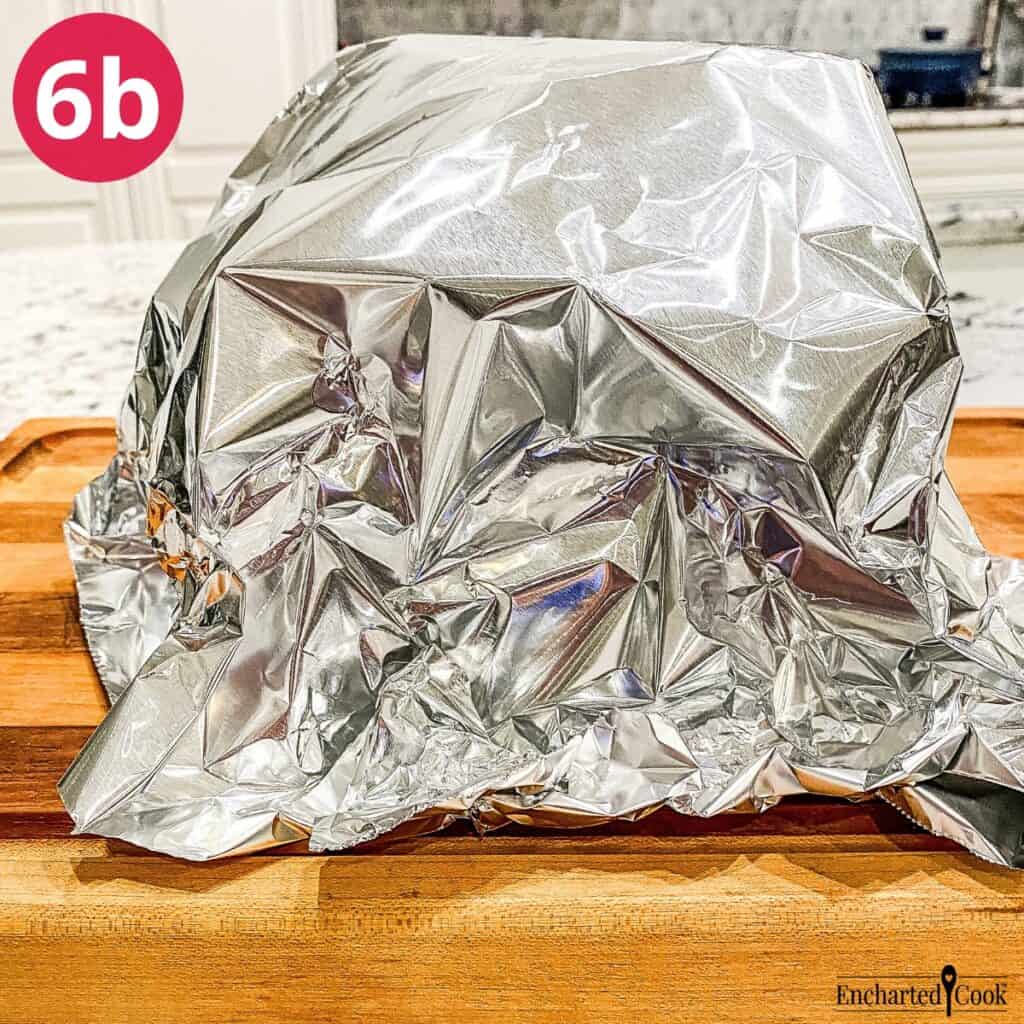
Rest. Remove the roast from the oven and cover it with aluminum foil. Let the meat rest for 15 minutes, which will allow the juices to be reabsorbed and moisten the meat.
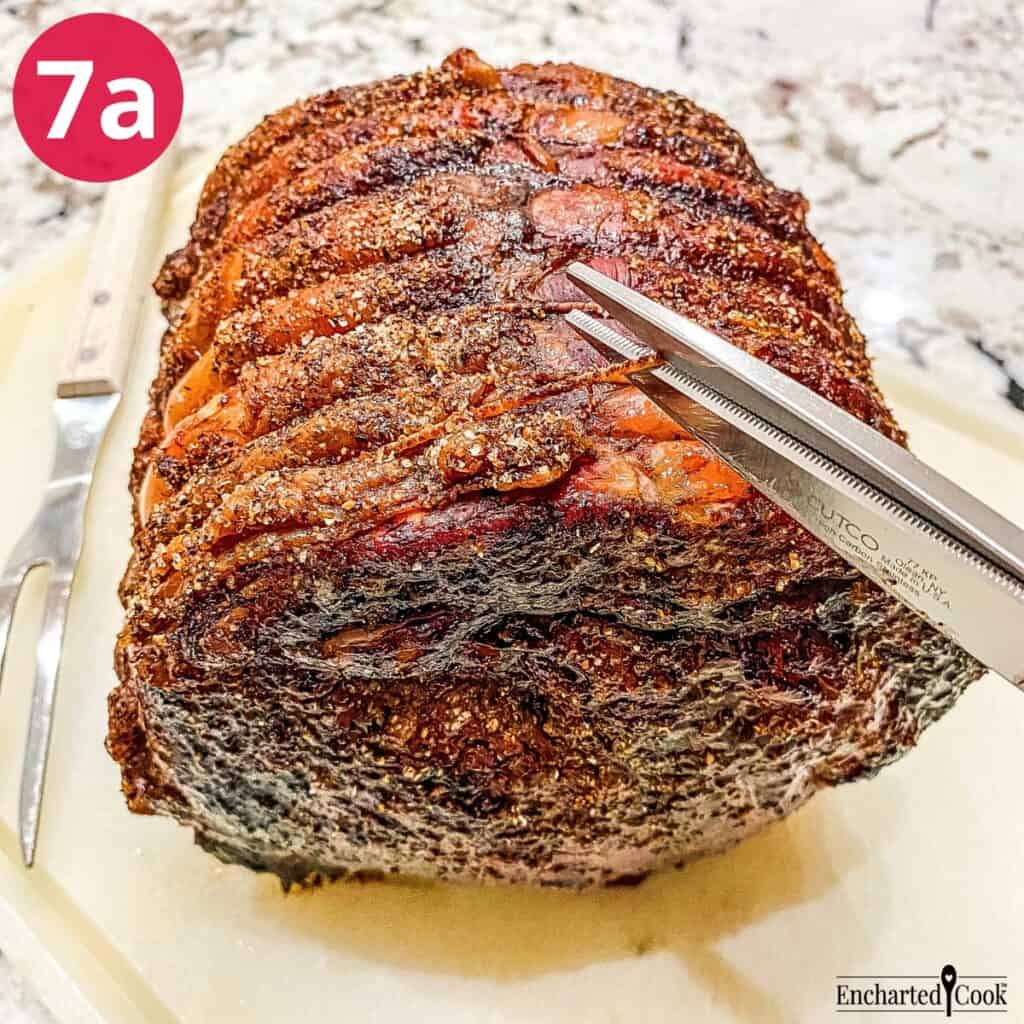

Carve and Serve. Transfer the roast to a carving or cutting board to cut. Begin by removing the string that ties the roast to the rib rack. Then remove the roast from the rib rack and set the ribs aside. Slice the meat and cut the rib bones apart. Place the sliced meat and rib bones onto a serving platter. Serve and Enjoy!
What to Serve with a Standing Rib Roast
- Boiled Potatoes
- Baked Potatoes
- Creamy Horseradish Sauce
- Cheesy Hashbrown Casserole
- Mashed Potatoes
- Roasted Root Vegetables
- Italian Salad Board
My Top Tips
♡ To get the best oven sear be sure to dry the beef well on all sides before seasoning it.
♡ The cooking of a standing rib roast is not linear and once a roast reaches 100°F/38°C it will cook at a faster rate. Checking the internal temperature often after reaching 100°F ensures the roast doesn't become overcooked beyond your desired temperature.
♡ When roasting a rib roast you will insert the thermometer into the center of the roast and roast the meat to your desired temperature. However, the outer slices will always be more well-done since the exterior of the meat will cook faster. These slices are perfect for a guest who wants their meat well done.
Substitutions & Variations
- Crispy Exterior. If you enjoy a crispy and caramelized exterior to your roast, oven-sear it at a high temperature before beginning the long roast at a lower temperature. Preheat the oven to 450°F/232°C and roast the meat for 10 to 15 minutes. Then reduce the temperature to 325°F/164°C and continue to cook the roast to your desired doneness. Alternatively, you can also reverse sear.
- Substitute Kosher Salt. Instead of garlic salt, you can use fine kosher salt.
Equipment
Roasting Pan and Rack. It is important that the hot air in the oven can circulate around the roast so that you get a nice crust. So, I prefer to use a large-rimmed baking sheet fitted with a roasting rack or a shallow roasting pan that has its own rack.
Thermometer. You can use either a meat-in thermometer that you will insert before the roasting begins or an instant-read thermometer to monitor the progress of roasting the meat.
Parchment Paper. Parchment paper is thriftier to use than aluminum foil and keeps hardened meat drippings from forming on the bottom of the roasting pan.
Aluminum Foil. You will need a large sheet of aluminum foil to cover the roast to keep it warm while it rests. You can also use it to line the roasting pan for a super easy clean up.
Make-Ahead & Storage
Store any leftover roast in the refrigerator wrapped in aluminum foil or plastic wrap. Unsliced roast in a single piece stays juicy and won't dry out. So it is best to cut only what you know will be eaten.
My neighbor has a cutie-pie dog that loves the bones. So, I like to individually wrap the rib bones in aluminum foil and then place them in a plastic bag that can be frozen.
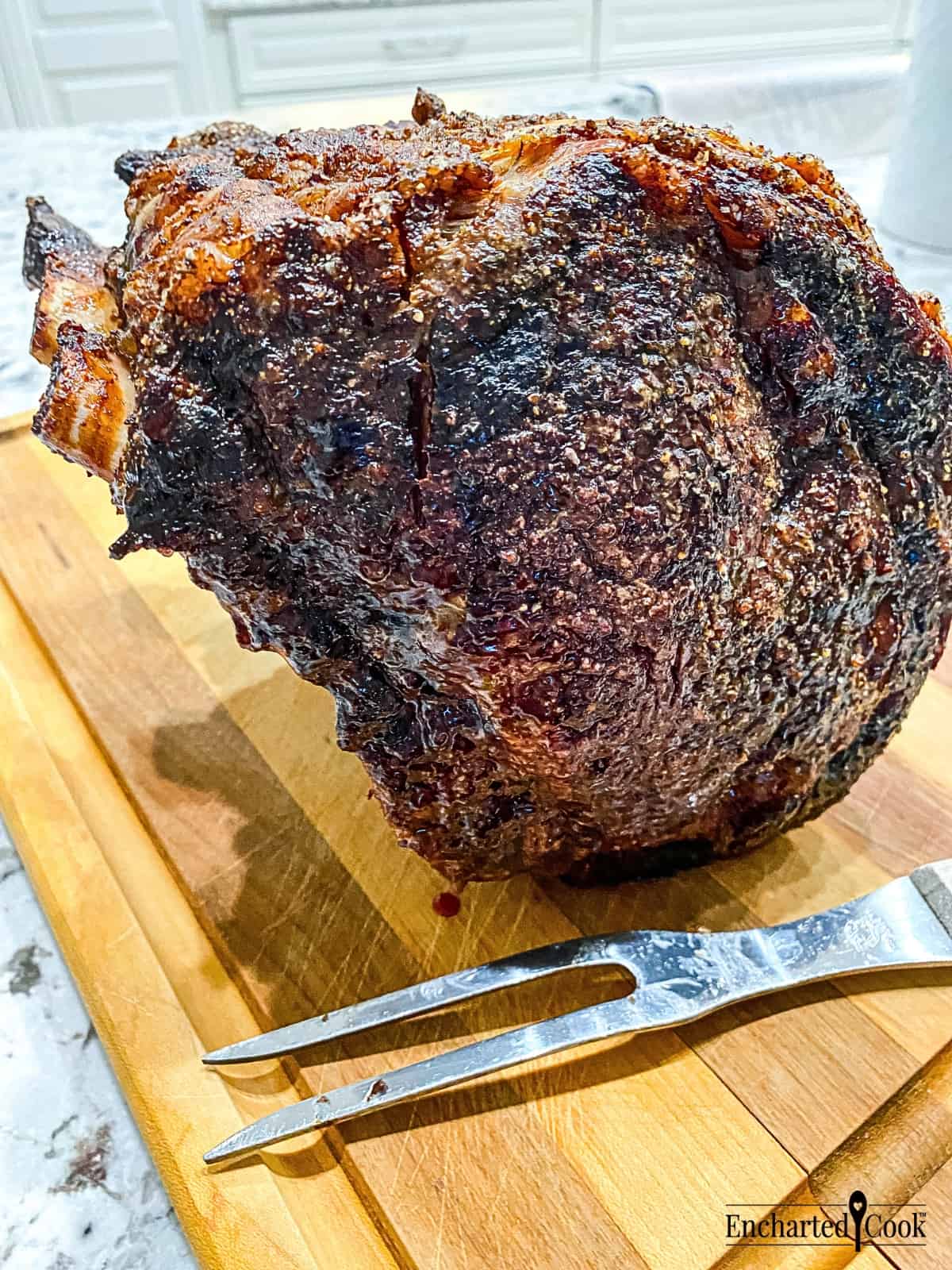
More Helpful Hints and Easy Roasted Meats
♡ Did you try out this recipe? Please give it a Star Rating below and tag @enchartedcook on Instagram and hashtag it #enchartedcook.
📖 Recipe
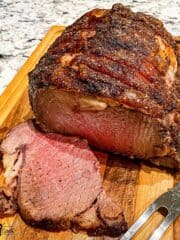
How to Cook a Standing Rib Roast
Equipment
- 1 Large-Rimmed Baking Sheet and Roasting Rack or a Roasting Pan with Rack
- Parchment Paper
- Aluminum Foil
- Meat Thermometer either Instant Read or In-Meat
Ingredients
- 1 Standing Rib Roast, Small End - 3 to 4 Bones - 4 ½ to 5 Pounds
- 1 ½ Tablespoons Garlic Salt
- 1 ½ Tablespoons Freshly Ground Black Pepper
Instructions
- Preheat and Prepare. Preheat oven to 325°F/163°. Remove the roast from the refrigerator and let it come to room temperature. Line a rimmed baking sheet and place a roasting rack on it or use a roasting pan with a rack.
- Dry. Remove the roast from its packaging and dry it thoroughly with paper towels or a clean kitchen towel. Drying the meat is essential to getting a good oven sear.1 Standing Rib Roast
- Season. Cover a clean working surface with enough parchment paper to wrap around the roast and sprinkle it with the garlic salt and freshly ground black pepper.Roll the roast in the salt and pepper so that all sides including the ends are covered.1 ½ Tablespoons Garlic Salt, 1 ½ Tablespoons Freshly Ground Black Pepper
- Place on Rack. Place the roast ribs side down and fat side up, on the prepared roasting rack, and insert a meat thermometer into the center of the roast. For the most accurate reading do not let the thermometer touch the bone. You can also use an instant-read thermometer to check the roast as it cooks.
- Roast. Place the roast in the oven and cook uncovered until the internal temperature of the meat reaches your desired doneness. You will need to pull the roast from the oven at 15° under the target internal temperature because the roast will continue to cook after it has been pulled from the oven and allowed to rest.Rare - 20 to 25 min/lb - Pull Temp 125°F/54°C - Target Temp 140°F/60°CMedium-Rare - 20 to 25 min/lb.-Pull Temp 130°F/57°C-Target Temp 145°F/63°CMedium - 25 to 30min/lb. - Pull Temp 145°/65°C - Target Temp 160°F/71°CMedium-Well - 25 to 30 min/lb. - Pull Temp 150°/68°C - Target Temp 165°F/74°C Well - 30 to 35 min/lb. - Pull Temp 155°/71°C - Target Temp 170°F/77°CIf the roast is cooking too quickly cover it with a tent of aluminum foil and reduce the oven temperature to 300°F/149°C.PRO TIP - Once the internal temperature of the roast reaches 100°F it will cook faster.
- Rest. Remove the roast from the oven and cover it with aluminum foil. Let the meat rest for 15 minutes, which will allow the juices to be reabsorbed and moisten the meat.
- Carve and Serve. Transfer the roast to a carving or cutting board to cut. Begin by removing the string that ties the roast to the rib rack. Then remove the roast from the rib rack and set the ribs aside. Slice the meat and cut the rib bones apart. Place the sliced meat and rib bones onto a serving platter. Serve and Enjoy!
Notes
Nutrition
Per 1 serving. All nutritional information on this site is an estimate. Your results may vary.




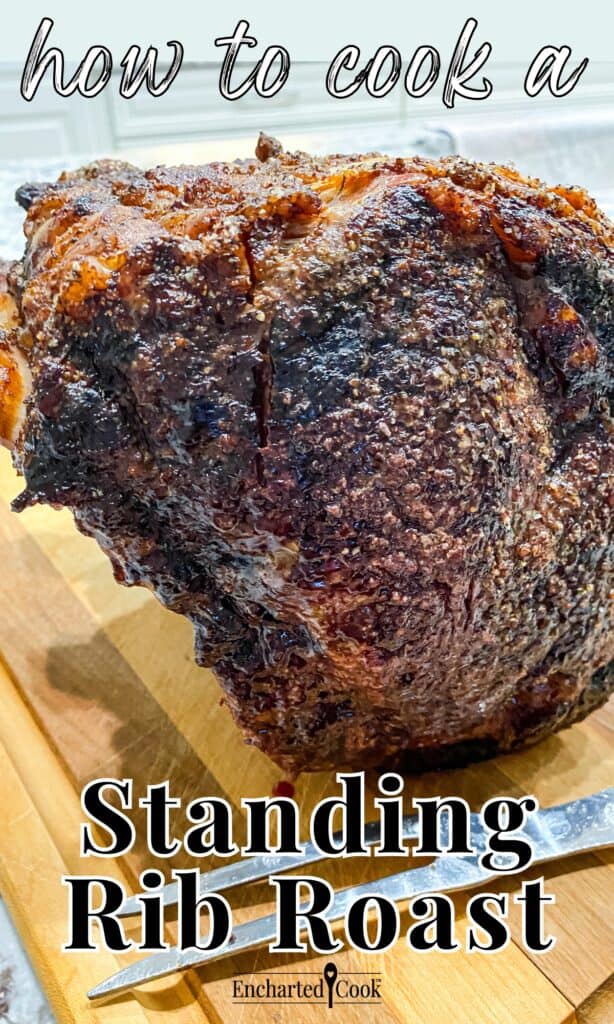
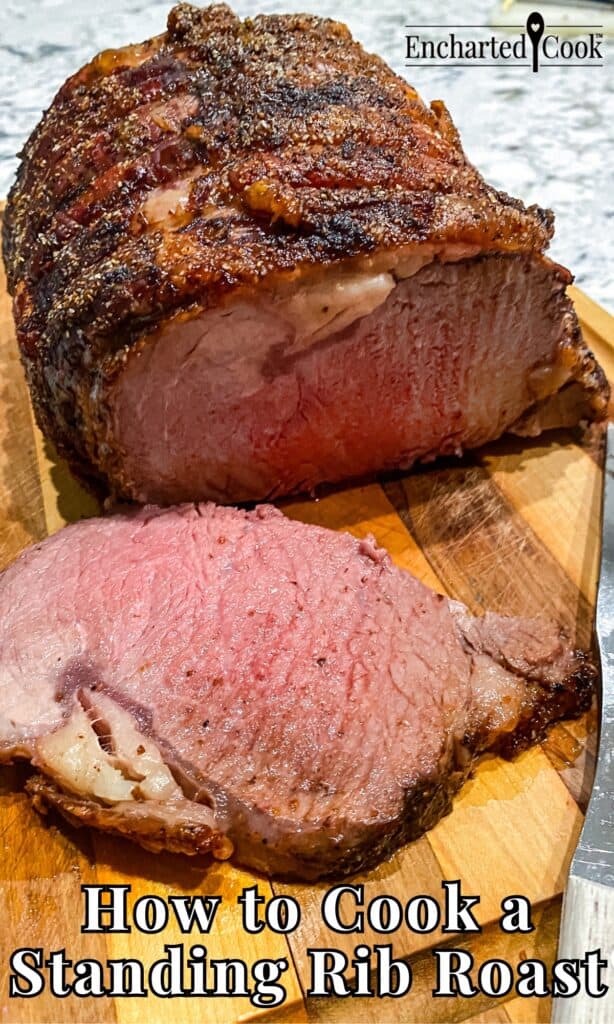
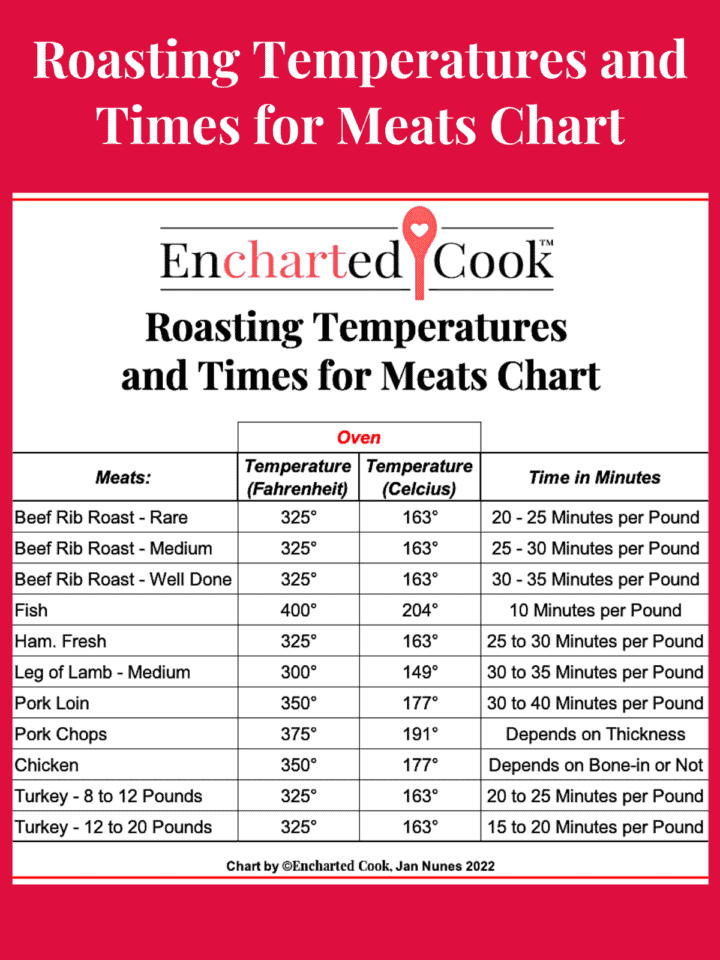
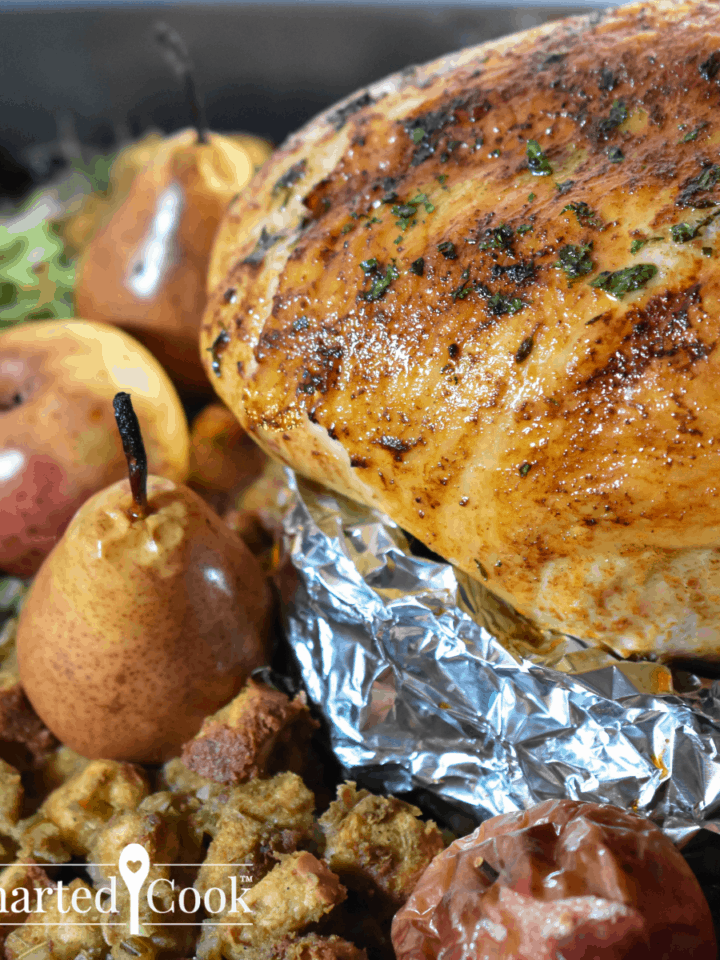
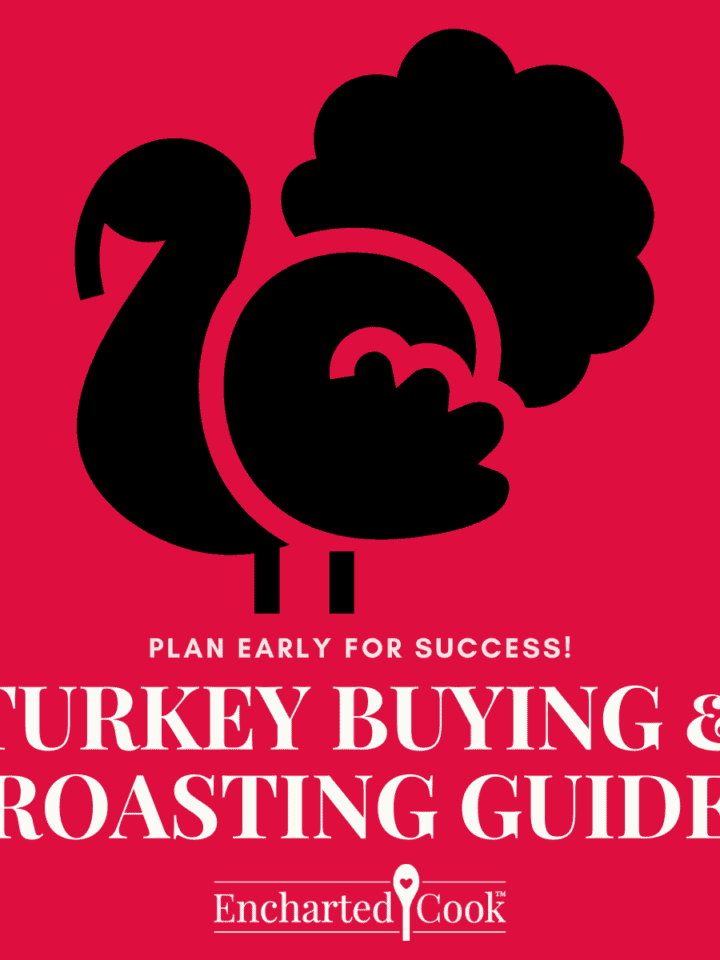
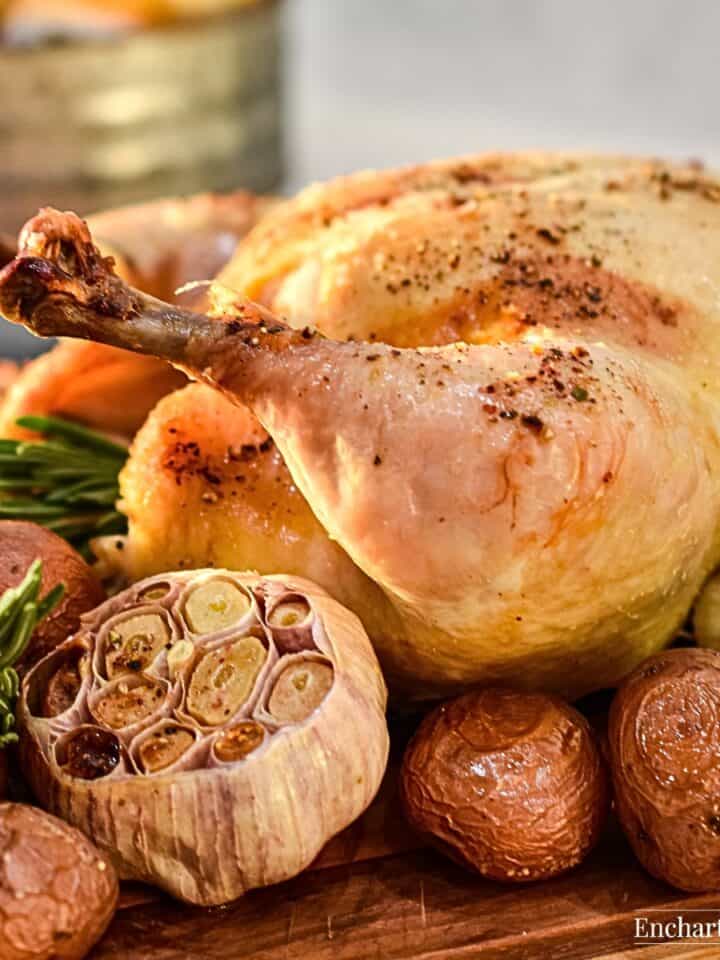
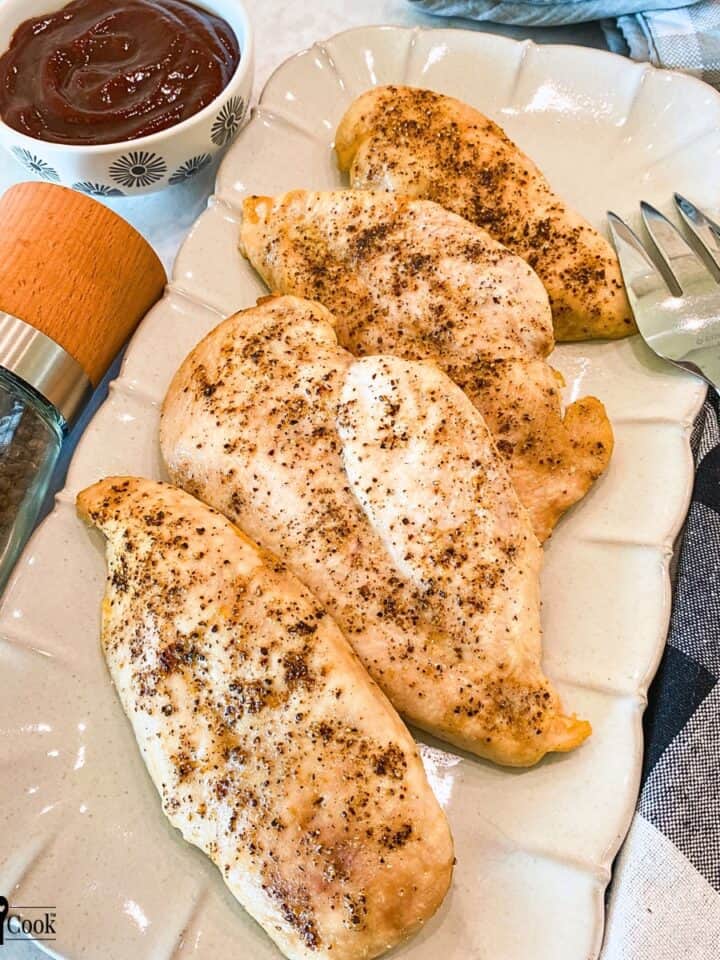
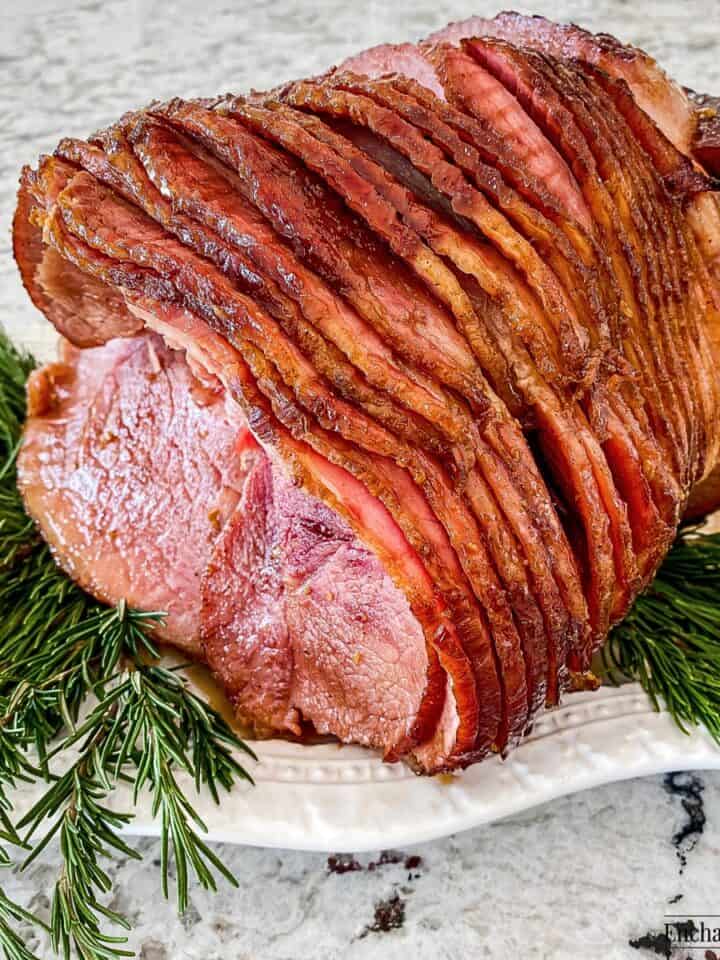
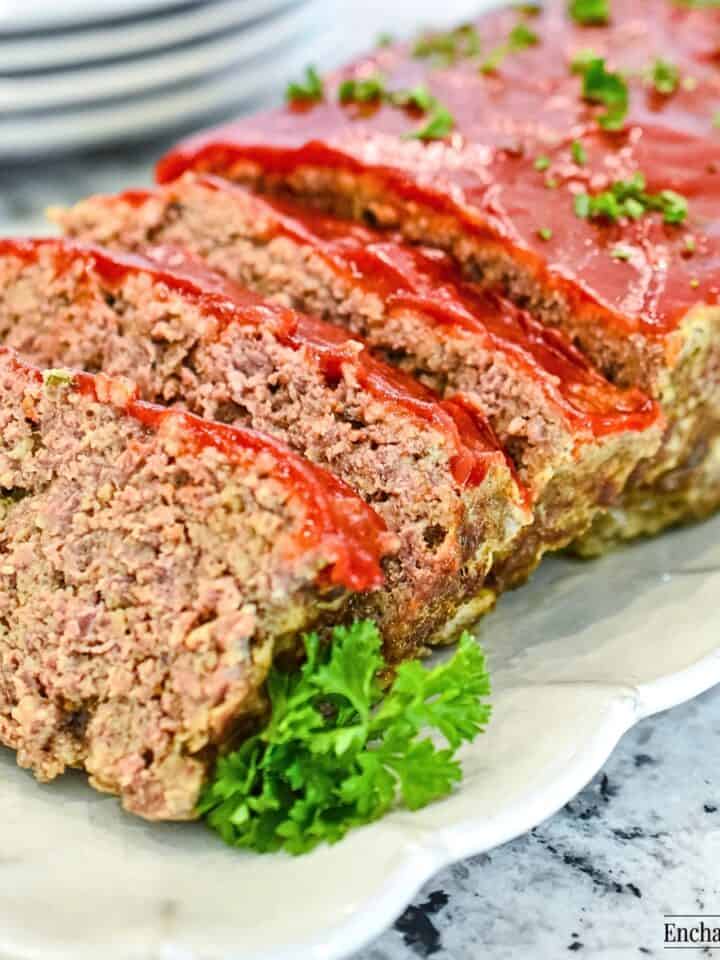
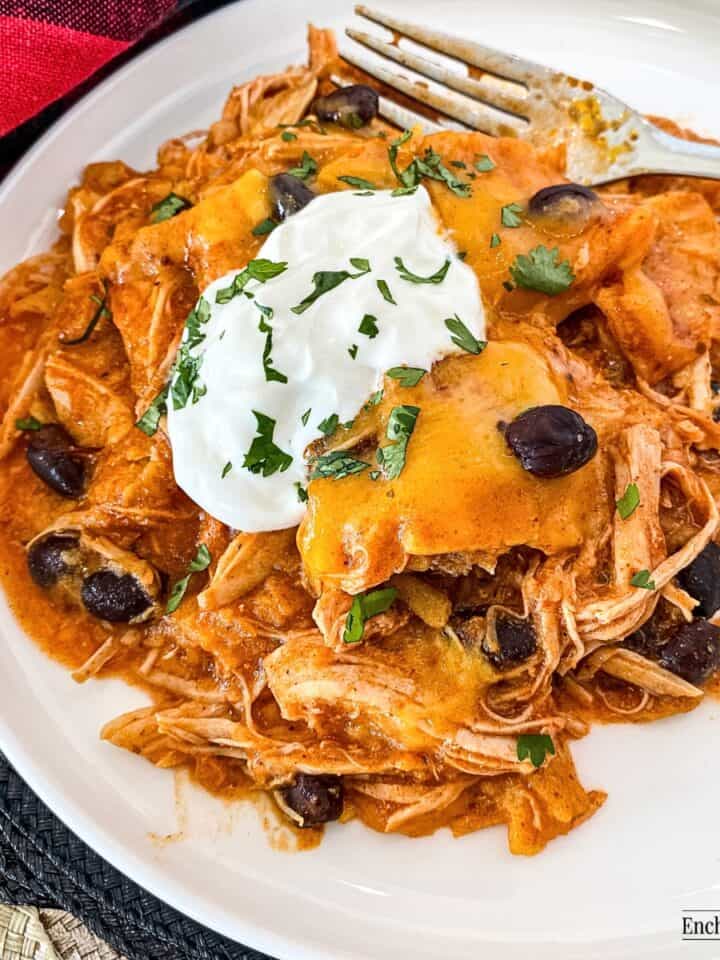
Comments
No Comments